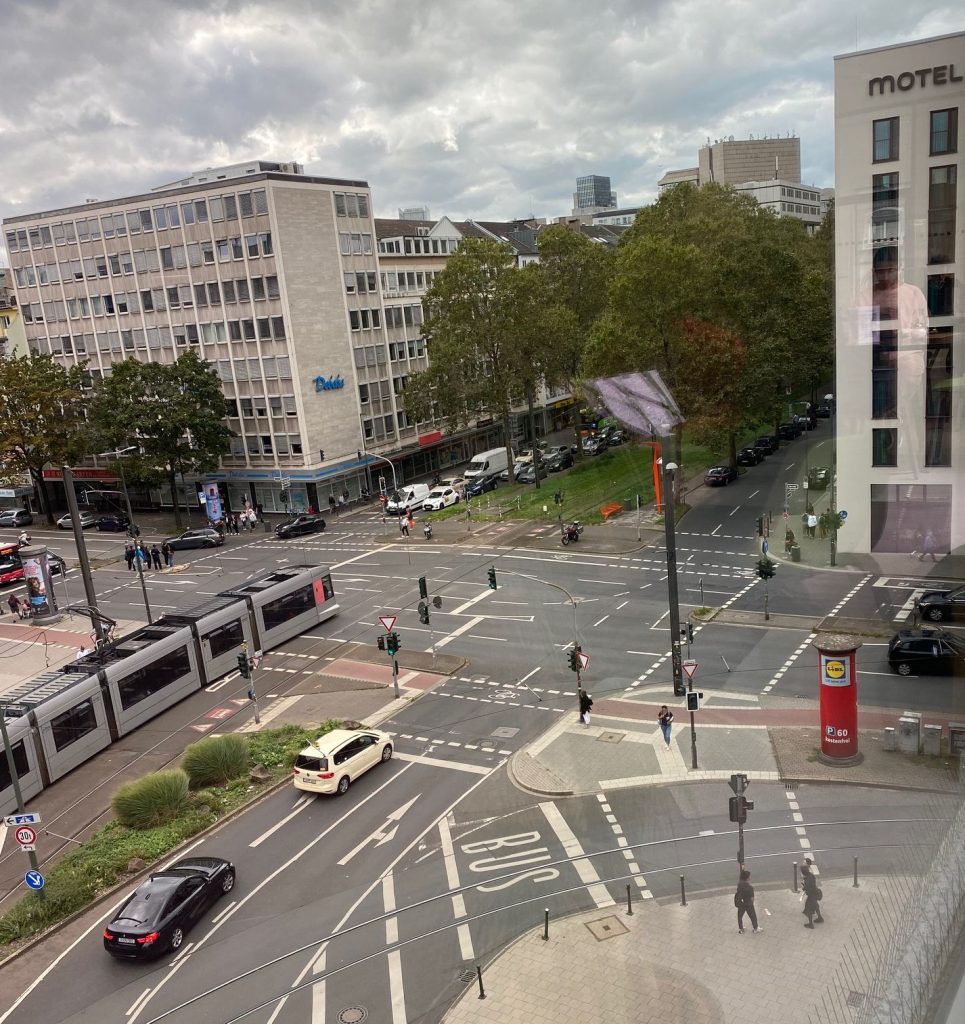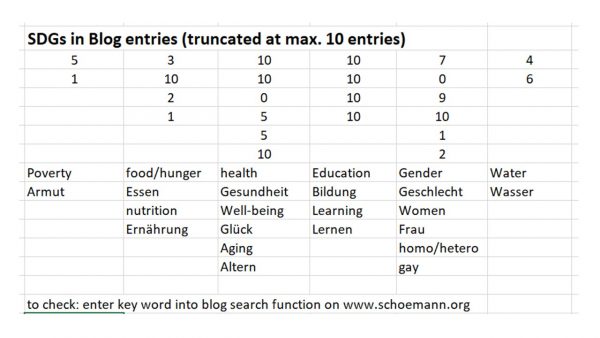In den öffentlichen Bibliotheken ist ein Generationswechsel der Besuchenden überfällig. Traditionell finden sich 4 unterschiedliche Gruppen von Personen in den öffentlichen Bibliotheken wieder. Da sind (1) die bildungsaffinen Rentenempfangenden, (2) die Eltern mit Kleinkind(ern), (3) Wärme- oder Kühle suchende Menschen der Umgebung und (4) die Schul-, Hochschul- oder Examensvorbereitenden. Soziologisch betrachtet ist das ein interessantes Aufeinandertreffen von gesellschaftlichen Randgruppen.
Die „Neue Zentralbibliothek im KAP1“ (Düsseldorf) hat aus diesen meist unverbunden nebeneinander operierenden Gruppen eine kommunikative Gemeinschaft produziert. Aktion und Interaktion ist nun angesagt. Der Flyer betont richtungsweisend: „Menschen, Bücher, Räume“. Fortan soll der Mensch und seine Lernfähigkeit im Vordergrund stehen, nicht mehr nur die Bücher. Dazu braucht es meistens anders oder umgestaltete Räume. Lernen war immer schon interaktiv und nur in Teilen allein im stillen Kämmerlein. Dazu braucht es Labs als Lernräume und nicht nur die Stille der „Page-turner“. Lernboxen, Lernstudio, Musikstudio sowie eine „Kreativschmiede“. Dort wird heute gepodcasted, 3D gedruckt und es werden social-media Kanäle entworfen und betrieben, immer schön generationsübergreifend. Voneinander Lernen ist das Motto nicht mehr nur nebeneinander und im Wettbewerb um die beste Bewertung. Kollaboration und gesellschaftlicher Zusammenhalt brauchen neue Räume, dem KAP1 in der Düsseldorfer Zentralbibliothek ist dabei schon viel gelungen. Die zentrale innenstädtische Lage ganz nah am Hauptbahnhof ist ein zusätzliches Asset. Ansonsten hätte ich mich wohl nicht auf der Durchreise dorthin verlaufen. Ein Random-Walk in Bahnhofsnähe, verursacht durch verpasste Verbindungen der Bahn, hat zu einer unerwarteten, bereichernden Zwischenpause geführt. Der Ausblick aus dem Café auf das übliche innerstädtische Verkehrschaos konnte umgeben von Alt und Jung richtig genossen werden. 
Monitor SDGs
The advantage of the goal-setting at the U.N. is definately that the progress or regress can be monitored. To do this, a definition for each goal in words is presented, which has to be translated in all languages. Some notions are subject to conceptual issues. Poverty, for example, in an individualistic society needs to be defined at an individual level. In societies where women and dependent children or elderly persons are part of one household, the household is the unit of definition. After the conceptual clarification the measurement of a set of indicators needs to be identified. How do we measure poverty? Here the focus is either on absolute poverty (lump sum of money available) or relative poverty (relative to others in society). Stability of poverty, poverty as transitional or access to poverty relief programmes as well as charity organisations in a country will play a role here. No simple answers and comparisons here. Timeliness of data is another issue. Data and sampling are costly in itself, therefore not every year the measurement is repeated to gauge progress or regress.
I take account of the SDGs in my own work in the form that the 17 SDGs of the U.N. are part of my work as well. In consulting practice it is a frequent task to check for example a larger enterprise on its contribution to the implementation of SDGs locally, nationally or globally. To start a reflection phase of my blog entries I just used the “search function” of the webpage and entered the first 6 SDGs in English and German to check, whether my webpage is SDG-proof. The result shown below in simple frequencies. Education and Learning come out as top scores. Other areas show fewer entries. In some goals, like gender, the keywords to check for are more diverse and return less precise results. This opens the conceptual box again. The notions summarised under a SDG goal might be numerous or singular – which leads to a bias in results. “Bildung” in German finds also “Weiterbildung” = further or continuous education at the same time, not the English term education. Subtle differences, but potentially huge effects. Overall, an interesting exercise to analyse my/your own mind and business practice. Focused attention versus broad coverage of SDGs, each has its strength and weaknesses. Goal 17 to strengthen the means of implementation and global partnership may build just on many more organisations doing their SDG-homework. Name, Measure, Improve – that is the action. SDGs in Blog1-6


